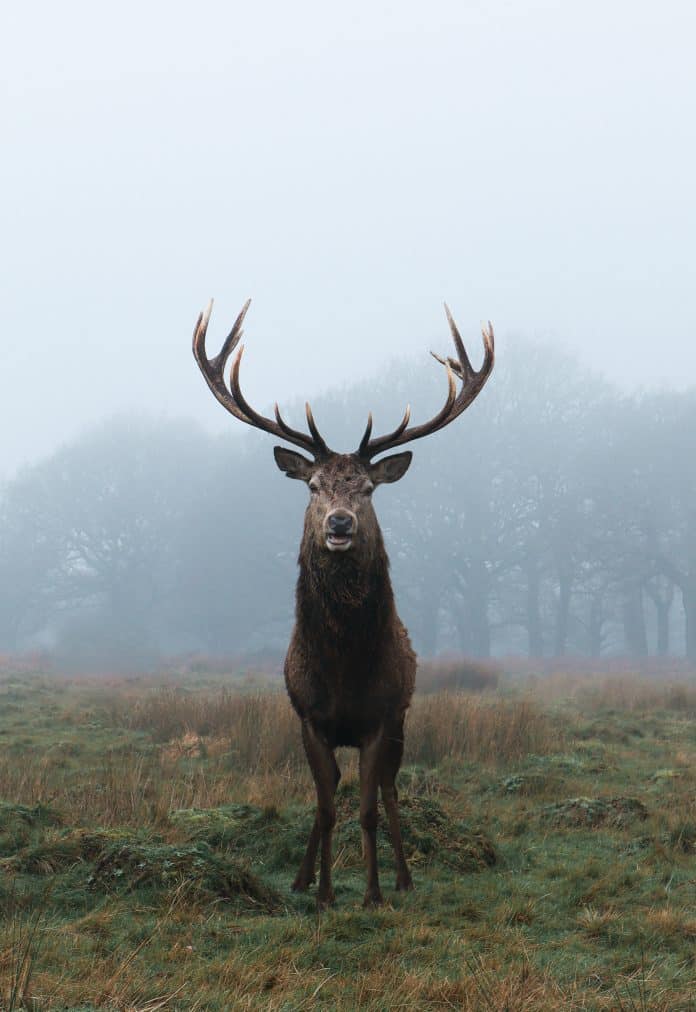This upcoming weekend is the archery season opener for all of us residing here in Zone C, as designated by the Florida Wildlife Commission. I will have the great pleasure of guiding three disabled vets on property near my home. I’ve been seeing tons of deer and I am really excited about their chances at filling up some coolers. One of these gentlemen hunted with me a couple of times last year and not only was he seeing deer, but he was fortunate enough to get off an arrow at a big doe for his freezer. The only problem was that she’d fled the scene into a deep, dark tangle of woods and he was having difficulty locating her.
Another hunter I had put out in a blind, decided it best that we should go and help him recover his deer and found the job quite a bit more difficult than we had anticipated. In fact, between the three of us, the tangled thicket of briars and tight underbrush made the job impossible; at times it was necessary to crawl about on your knees as the dense brush made it impossible to stand. In little time, we knew that we were in over our heads and needed some specialized help. I pulled out my phone and called for the dog!
The use of tracking dogs began and was highly developed in Germany and other Central European countries many years ago and that tradition has spread to many parts of the South here in our country. Today, many breeds of dogs are used to trail deer including bloodhounds, beagles, curs, labradors, and golden retrievers, though the labradors seem to be most popular amongst the trainers I know of.
Tracking dogs are trained to follow the trail of the game animal either by its own scent or by the smell of the blood and they make short work of a recovery. Usually within minutes they can follow a scent trail and locate a downed animal in the most extreme conditions, where otherwise it would take a man hours to unravel the trail. In an area, such as we had found ourselves attempting to track that doe my friend had shot, dogs can slip in and out of the smallest trails with ease. Sure enough, once the labrador arrived and was put on the trail leading into the jungle-like forest, he was off like a shot and guiding our way.
I’ve witnessed trail dogs used in the past to recover game, but until a couple of years ago, I did not know that there is an entire network of handlers offering their services throughout the state, free of charge, to any hunters having difficulty locating downed game. Their properly trained dogs ignore the fresher scent of healthy deer and stick with the main trail you introduce them to and the volunteers of this network regularly recover more than 125 deer per year here in Florida. For more information about the Florida Blood Trailing Network, you can find them on Facebook and they have posted a list of handlers for each county.
Obviously, hunters should not rely entirely on dogs for trailing deer. FBTN dog handlers get involved only after a hunter performs a thorough search and has basically given up hope because of no visible sign. That is when the FBTN members will join the search and their success rate is unbelievably high. One handler I spoke to recently reports a FBTN recovery rate of approximately eight out of ten success ratio of all tracking attempts. This is remarkable since the hunter or hunters have already accounted for many, many hours in the woods. It’s his belief that the few deer that do go unrecovered were not struck by a lethal blow and will recover. If you find yourself in need of recovery on a deer, go to Facebook and look up the Florida Blood Trailing Network, their handlers are on call and waiting to help.
As always, if you have any questions or comments on this week’s column, feel free to reach out to me at [email protected]. God bless and good hunting!

